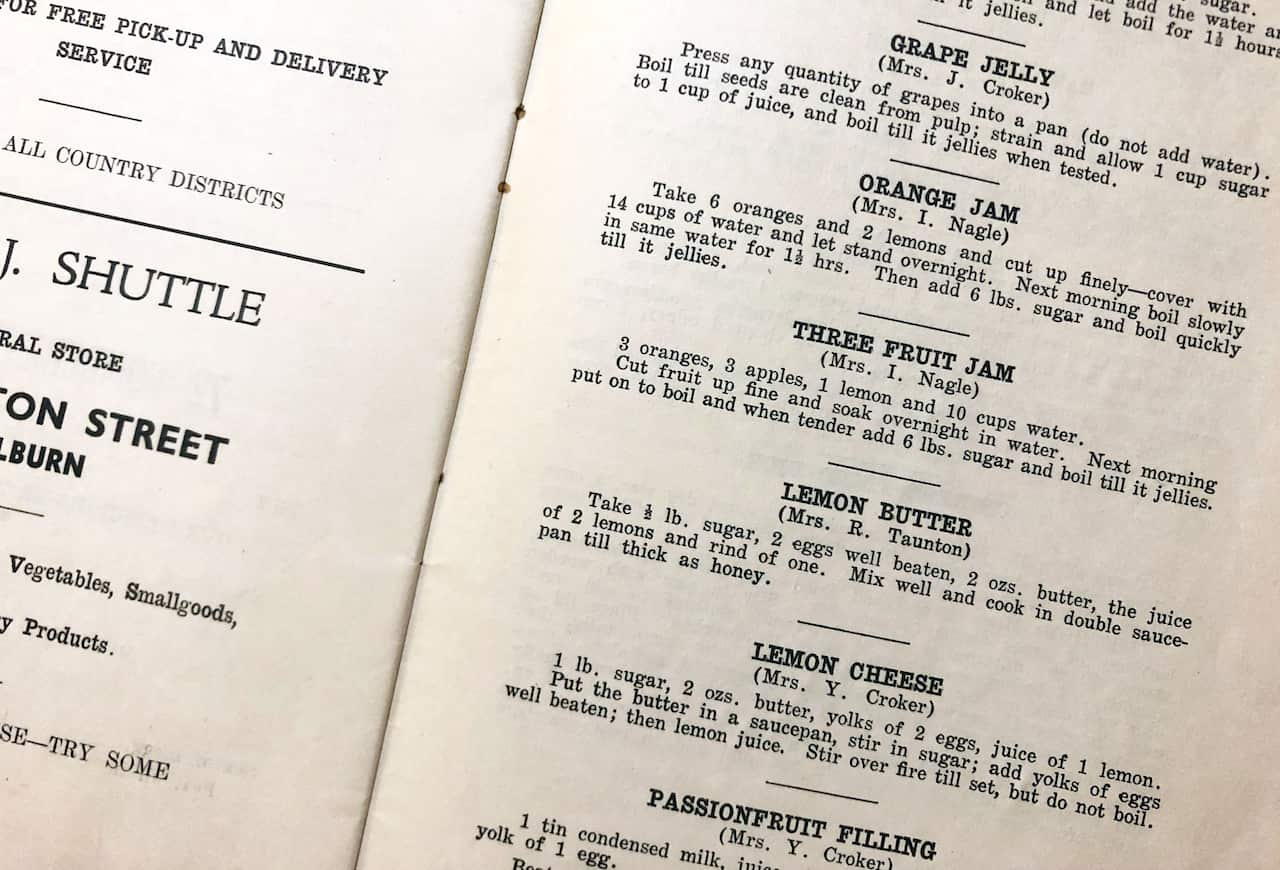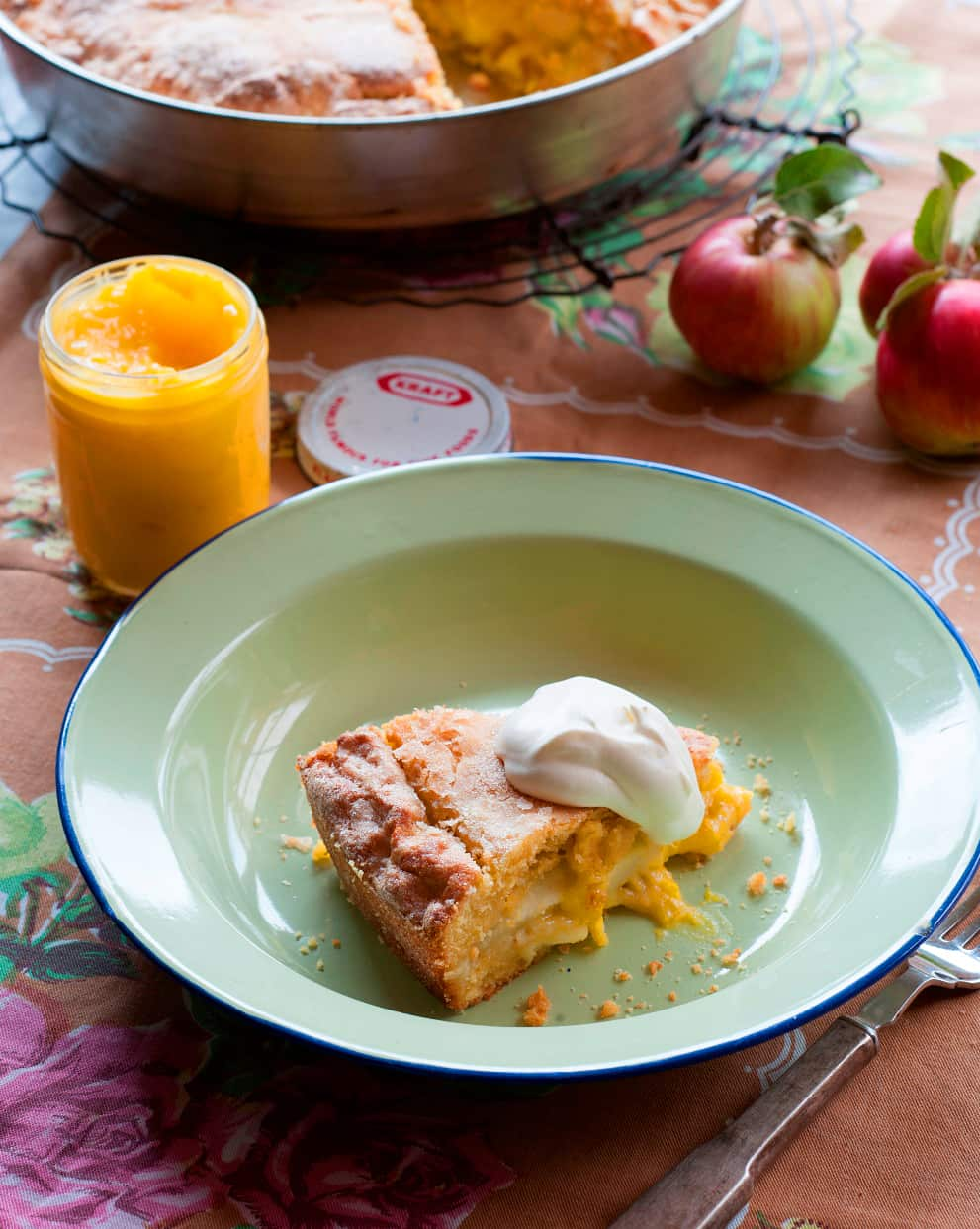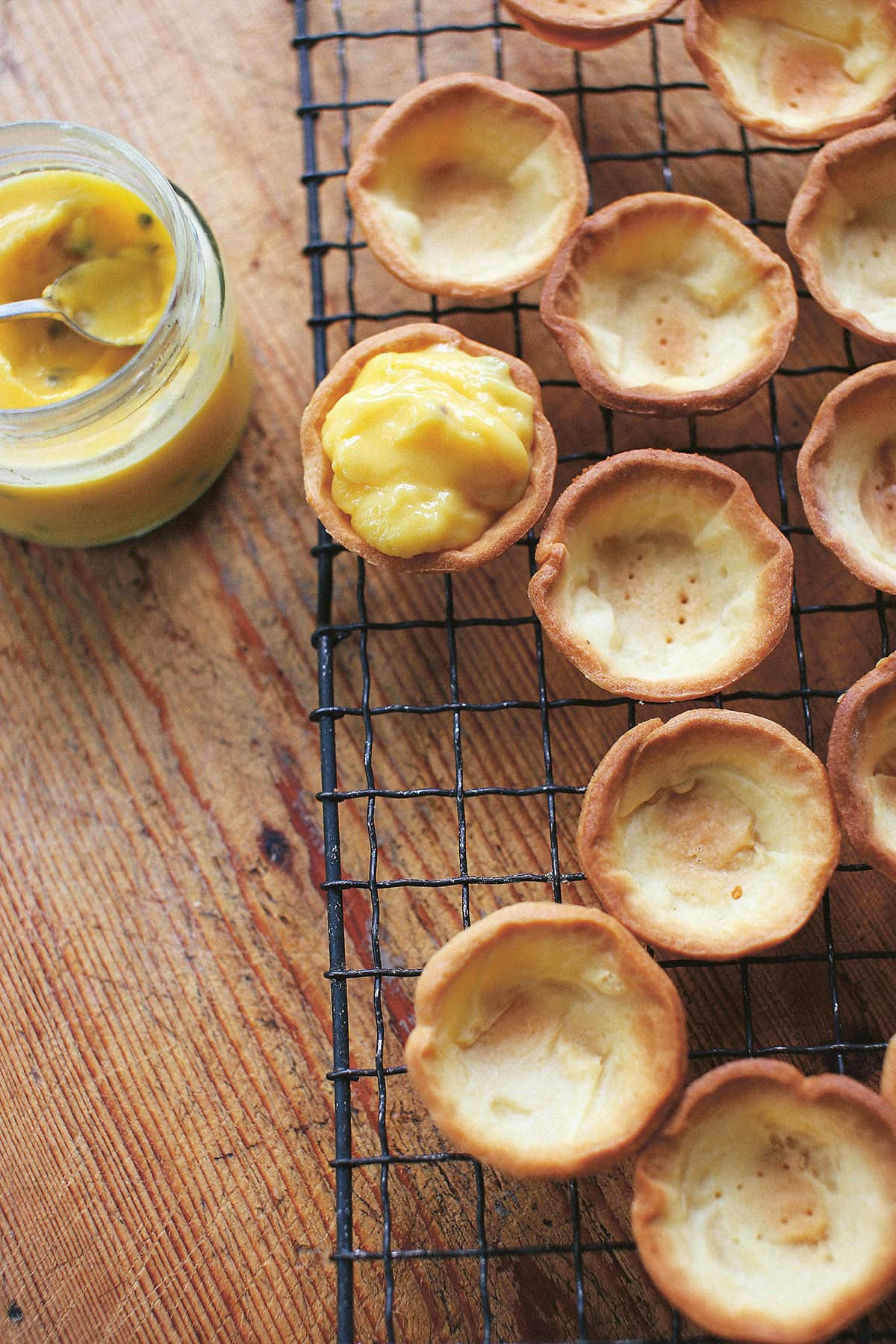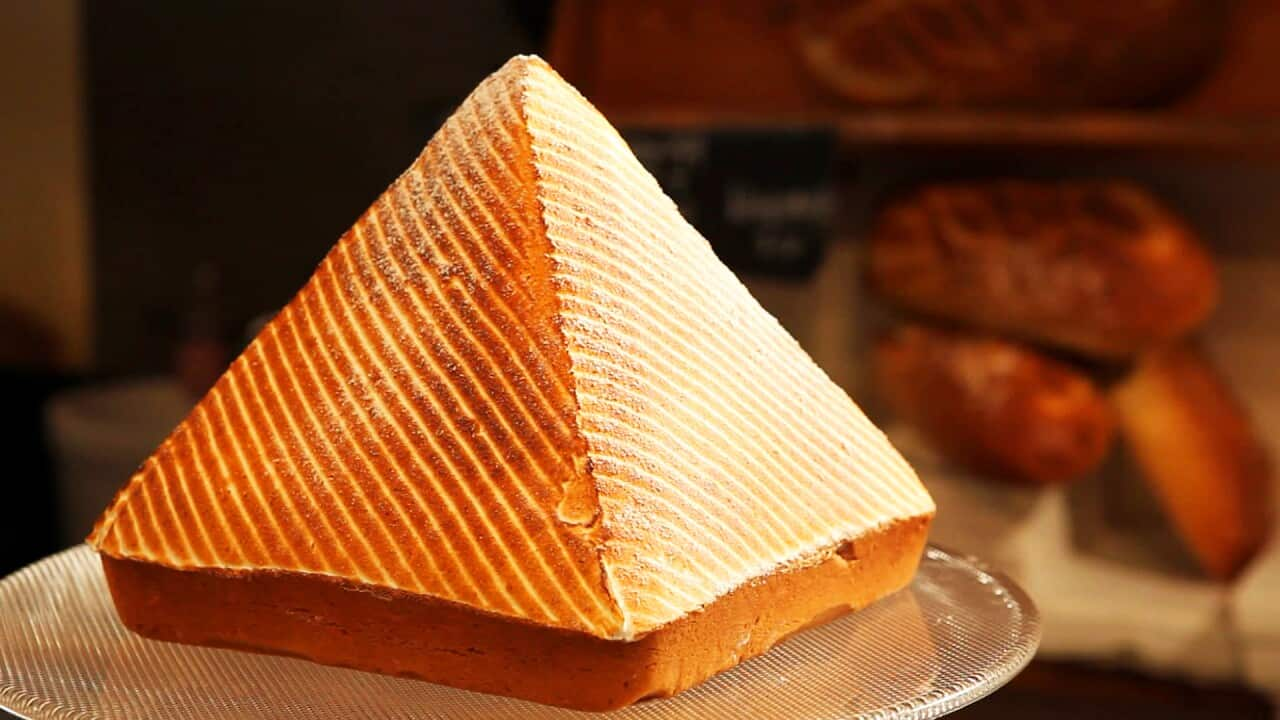“It’s like a little jar of sunshine,” says writer and keen lemon curd maker Sophie Hanson, and in just seven words, she’s summed up so much of what fans love about this simple preserve. Its golden-yellow colour is so cheery; it’s sweet-sharp tang brings a touch of brightness to even the coldest of winter mornings; and for some, it’s just a wee bit like a hug from your grandma.
Lemon butter or lemon curd?
When we started thinking about the secrets of making a really good, thick, tart, smooth (no bits of egg white!) for this article, we soon found ourselves doing something almost as delightful as slathering generous dollops of the stuff on fresh bread: disappearing down the wonderful rabbit hole of recipe history, and pondering the many names this preserve is known by. Australia’s affection for this citrus spread probably comes in part from our colonial ties to England, where variations appeared in recipe books as early as the 1700s, and where it remains a popular preserve.
Australia’s affection for this citrus spread probably comes in part from our colonial ties to England, where variations appeared in recipe books as early as the 1700s, and where it remains a popular preserve.

Lemon curd Source: Petrina Tinslay
Over the years, this mixture of lemon, eggs, butter and sugar has been called lemon curd, lemon butter and lemon cheese, and from our research, while there is some variation in recipe – some use whole eggs, some use yolks; some put everything in together right from the start, some don’t – in Australia there’s been no consistent use of a particular name for a particular variation*.
A sample, for those who also love this kind of rabbit hole: A 1984 edition of The Commonsense Cookery Book, found in many schools and home kitchens in years past (“more than a million copies sold”), uses egg yolk for Lemon Cheese, but notes that a whole egg “may be beaten and used if liked”. Skipping back a few decades, in a pamphlet of recipes called The West Goulburn Churchwomen’s Union Book of Favourite Recipes, published in 1956, a recipe for Lemon Butter from Mrs R. Taunton runs directly above a recipe for Lemon Cheese from Mrs Y. Croker. Mrs Taunton uses whole eggs, and mixes everything right from the start, while Mrs Croker uses egg yolks, and melts butter with sugar before adding eggs, then lemon juice. In Tested Recipes, a booklet published by the South Kew Baptist Ladies’ Guide in 1931**, there’s a triple offering, all of them in a section on cake fillings: two versions of Lemon Butter (whole eggs in both), and a Lemon Filling (likewise). “My grandmothers both called it lemon butter while lemon curd seems to be more widely used these days,” says Sophie Hansen, who has published for lemon curd and variations on her blog , including lemon verbena curd and lemon and apple curd.
“My grandmothers both called it lemon butter while lemon curd seems to be more widely used these days,” says Sophie Hansen, who has published for lemon curd and variations on her blog , including lemon verbena curd and lemon and apple curd.

A taste of yesterday from the West Goulburn Churchwomen's Union Book of Favourite Recipes. Source: West Goulburn Churchwomen's Union
“But now I really think about it, lemon butter is a much more apt name as the recipe contains so much of the stuff! And it’s not a curd at all.”
And what of “lemon honey”? While most recipes for this less-common variation use honey instead of sugar, it’s not always the case: the EWA Cookery Book, published in 1936, uses sugar (and, for the record, egg yolks) in its Lemon Honey recipe.
The secret is in the stirring
While many of those historical recipes assumed the reader would be familiar with what they were making and not in need of much detail (even, in some cases, with no reference to heating the ingredients), those recipes and their modern descendants mostly have one thing in common: the instruction to stir well.
“I think the key to not getting white bits in your curd is to really keep the temperature nice and low and to whisk constantly. The white bits are simply pieces of cooked egg and they are a bit of a bummer to be honest as they mean you lose that lovely smooth texture. And when it comes to getting the recipe to set, I think time and a good even temperature is the main thing. It really does take longer than you think, a good 20 minutes is normal for me!” says Sophie Hansen.
“Remember that it should set further in the fridge but don’t stop cooking it until the curd really does thicken nicely in the bowl and coat the back of a wooden spoon, leaving a clear line when you run your finger up it.”
The other key point, as BakeProof columnist Anneka Manning says in her recipe for , is to avoid boiling the mixture. And if you do end up with a few flecks of egg white, or a not entirely smooth curd? “Don’t worry if there are lumps – they prove it’s homemade,” says Gourmet farmer Matthew Evans, who uses his in his .
And if you do end up with a few flecks of egg white, or a not entirely smooth curd? “Don’t worry if there are lumps – they prove it’s homemade,” says Gourmet farmer Matthew Evans, who uses his in his .  Another tip comes from My Swedish Kitchen host Rachel Khoo, who makes a lush lemon curd to use in her , which has layers of lemon cake, lemon curd and cream cheese icing. When zesting your lemons, "you really just want to get the top layer because that's where all the flavour is. Don't grate in the white part, because that has a bit of bitterness to it," she says.
Another tip comes from My Swedish Kitchen host Rachel Khoo, who makes a lush lemon curd to use in her , which has layers of lemon cake, lemon curd and cream cheese icing. When zesting your lemons, "you really just want to get the top layer because that's where all the flavour is. Don't grate in the white part, because that has a bit of bitterness to it," she says.

Lemon buttermilk pound cake with lemon curd Source: Alan Benson

Apple and lemon curd shortcake Source: Feast Magazine

Rachekl Khoo's lemon and yoghurt cake Source: My Swedish Kitchen
Endless variations
Changing up the citrus juice, and in some recipes, zest, used is one way to vary your curd. “You can make a curd out of so many different fruit, lemon curd, lemon and lime, orange … blood orange is amazing, gives great colour,” says Irish cook Rachel Allen, who makes a grapefruit curd in Rachel Allen: All Things Sweet.
You can also add other flavours to a basic lemon curd.
In Queensland, Indigenous chef and teacher Dale Chapman, a Kooma, Yuwaalaraay woman from central Queensland and widely respected bush food expert, makes a bush lemon and finger lime curd, served up in individual tarts for catering. Chapman, who is a director of , which sells bush food products as well as offering catering, stirs the finger lime pearls into cooked and cooled lemon butter. As well as adding flavour, she says, the pearls really brighten up the butter.
"We use the old, strong bush lemons, but you can make it with anything. I've made it with lemon aspen juice, along with the lemon juice," she says - she puts the lemon aspen, a tart native fruit mostly grown in northern Queensland, which can be a bit woody she says, through a juicer.
And her tips for lemon butter success? "I tend to bring it slowly up to hear, and always stirring, and keeping an eye on it. It's just one of those things you have to watch. The key is to make sure you have everything in place, so you don't need to walk away, and have to the time to do it," she says.
Lots of other flavours work well too. Love lemongrass? Try Rachel Khoo’s . Plenty of passionfruit? Try Sophie Hansen’s (with a plain lemon curd option, too), from her utterly heart-warming book (Murdoch Books, RRP $39.99), full of recipes for sharing with others.  “I have tried many recipes over the years but have landed on the one in my book as my favourite - I just love that it uses whole eggs and find it sets well for me every time,” she tells us.
“I have tried many recipes over the years but have landed on the one in my book as my favourite - I just love that it uses whole eggs and find it sets well for me every time,” she tells us.

Spoon Sophie Hansen's passionfruit butter into tart shells for q quick dessert. Source: Sophie Hansen
Another twist is to make a fruit puree and either add it to the mixture while cooking or swirl it through the cooked mixture.
“Rhubarb curd is delicious enjoyed in the way you would enjoy a lemon curd: with meringues and cream or just drizzled over yoghurt or ice cream,” says Allen, as she makes a in the “Afternoon Tea” episode of All Things Sweet. She cooks rhubarb and sugar (no added water, because she wants a thick puree) until soft, pushes the fruit mixture through a sieve, then adds the puree to melted butter along with sugar and eggs. And just as with lemon curd, “stir it constantly over a low heat till it's thickened. Don't let it boil the eggs will scramble really easily if it gets too hot,” she says.
If peaches are in season, try Beth Kirby’s , made with pureed fresh peaches, and served up in tart shells, topped with basil cream.
You can also add mashed banana to the mix while cooking.
For a pretty tart filling, try swirling berry puree through cooked and cooled lemon curd.
How long will it last?
If you plan to keep it for more than a few days, do as Matthew Evans suggests in his recipe and sterilise your jars before filling them.
While the authors of Calling All Cooks, published by the South Australian Gas Company in 1941 (one last report from the rabbit hole!) optimistically say their Lemon Cheese “will keep indefinitely”, we’d suggest several weeks is more realistic. CWA-prize-winning cook Merle Parrish says her will keep for eight weeks in the fridge. But let’s be honest, for those who love lemon butter/curd/cheese/honey/call it what you will, it’s going to be all gone well before that, is it?
* There is another, even longer, rabbit hole beckoning those interested in the difference between fruit cheese and fruit butter. Aside from the kind of fruity variations on lemon butter mentioned above, these are usually terms for preserves or pastes made with fruit and sugar - no eggs or butter. A “cheese” is generally thicker than a "butter".
** Got an Australian cookbook with an earlier recipe for lemon butter? We’d love to hear about it – find us on or or and share your recipe treasures.






